Quantum Design PPMS Installed at UIC
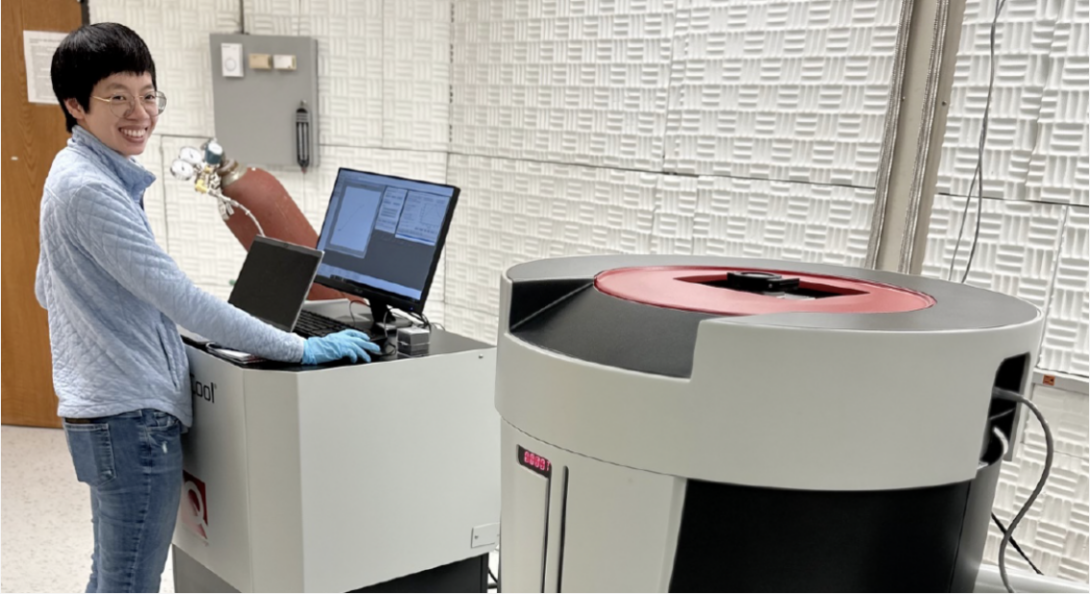
A Quantum Design Physical Property Measurement System (PPMS) has just been installed at UIC. This unique, versatile, and highly configurable instrument will enable measurements of electrical, magnetic, and thermal transport, and thermodynamic properties of materials over a broad range of temperatures down to 1.8 K, magnetic fields up to 14 T, and pressures from ambient to above 300 GPa (3 megabars).
CDAC personnel will use this instruments to address an array of problems spanning basic science, applied science, and engineering of new materials and devices. The instrument will advance the fundamental physics, chemistry, and materials science of superconducting materials, quantum materials, thermoelectrics, energy storage materials, superhard materials, novel nanoscale materials, and semiconductor and superconductor-based electronic devices. This capability will also enable research and student and postdoctoral training at UIC and at other institutions, and will be integrated into the student education and training activities of UIC.
The PPMS will reside in the UIC Research Resources Center (RRC). Dr. Fengyuan Shi, RRC Microscopy Facility Director, who will oversee the instrument in SES 166C. The instrument was obtained with an NSF MRI grant (Russell J, Hemley, PI). If you feel that this instrument could benefit your research, then please contact both Hemley and Shi (rhemley@uic.edu and fyshi@uic.edu) about your interests.
=========================================================================================
Saniya LeBlanc Receives PECASE Award
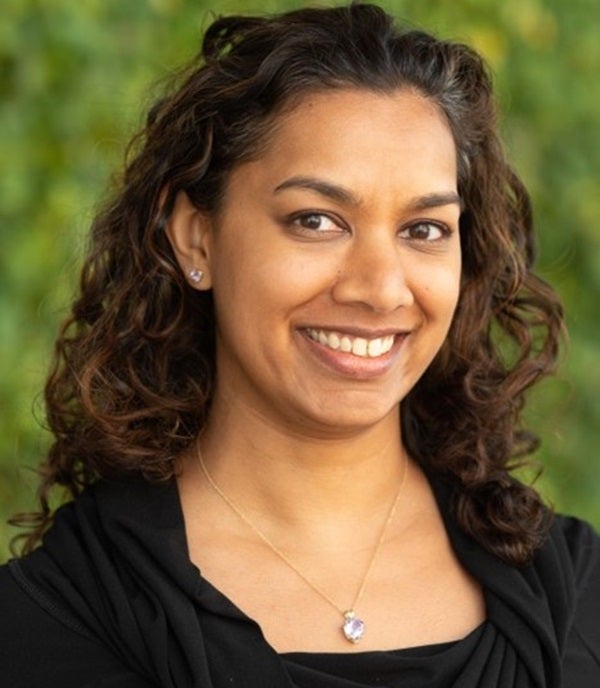
CDAC Academic Partner Saniya LeBlanc, Professor in the Department of Mechanical and Aerospace Engineering at George Washington University, has received a Presidential Early Career Award for Scientists and Engineers (PECASE). The PECASE awards are made annually through a number of different agencies, including the Departments of Defense, Energy, and Health and Human Services, as well as NASA and the National Science Foundation, and represent the highest honor bestowed on a scientist or engineer at the start of their independent research career by the US Government. Recipients of the PECASE awards are chosen based recommendations from the participating agencies.
Professor LeBlanc’s PECASE award recognizes her technical leadership in the development of additive manufacturing techniques for preparation of thermoelectric materials using the laser powder bed fusion method. In CDAC, her research is directed toward varying processing parameters to control spatial and temporal temperature gradients in melt pools as the laser melts layers of powdered material. Professor LeBlanc also investigates the high P-T behavior and performance of thermoelectric materials produced by laser powder bed fusion methods.
Please see also the announcement from George Washington University here.
For more on Professor LeBlanc’s research, see her GWU Faculty Page.
=========================================================================================
Postdoctoral Research Opportunity : Eric Bauge Postdoctoral Program
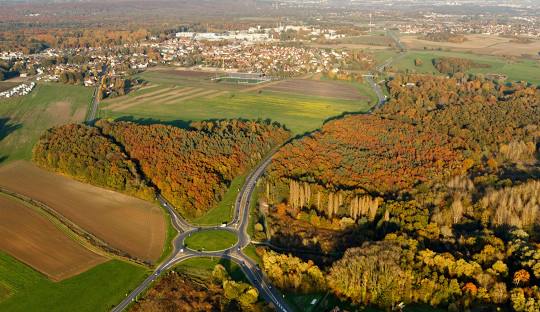
The NNSA, in cooperation with the French CEA/DAM (Military Applications Division of the French Alternative Energies and Atomic Energy Commission), has established the Eric Bauge postdoctoral program to encourage and facilitate the exchange of postdoctoral positions between France and the United States. The program assists qualified U.S. individuals in finding an appropriate postdoctoral appointment at the CEA laboratory at Bruyères-le-Châtel in Arpajon, France (approximately 24 miles from the center of Paris) for one to two years working on research projects of mutual interest. A postdoctoral research appointment with the leading research groups at CEA/DAM offers a unique and highly impactful opportunity to broaden and deepen one’s research experience. Scientific topics of interest include, but are not limited to, nuclear physics, materials science, opacity and radiation transport, energetic materials, and laser/plasma science.
For further information on the program, please see the slides from the presentation that was given at the SSAP Symposium in 2023.
This postdoctoral fellowship program is named in honor and in memory of Eric Bauge, a longtime researcher at CEA in the area of nuclear reaction modeling and neutronics. Dr. Bauge was the chair of the nuclear physics department at the CEA in Bruyères-le-Châtel for many years.
To apply, prospective candidates should send a CV and letter stating their interest in the program and describing their research interests to michael.kreisler@nnsa.doe.gov. Applicants should also provide in their letter the expected date for completing the PhD degree.
=========================================================================================
Tony Rollett Receives ASM Gold Medal Award
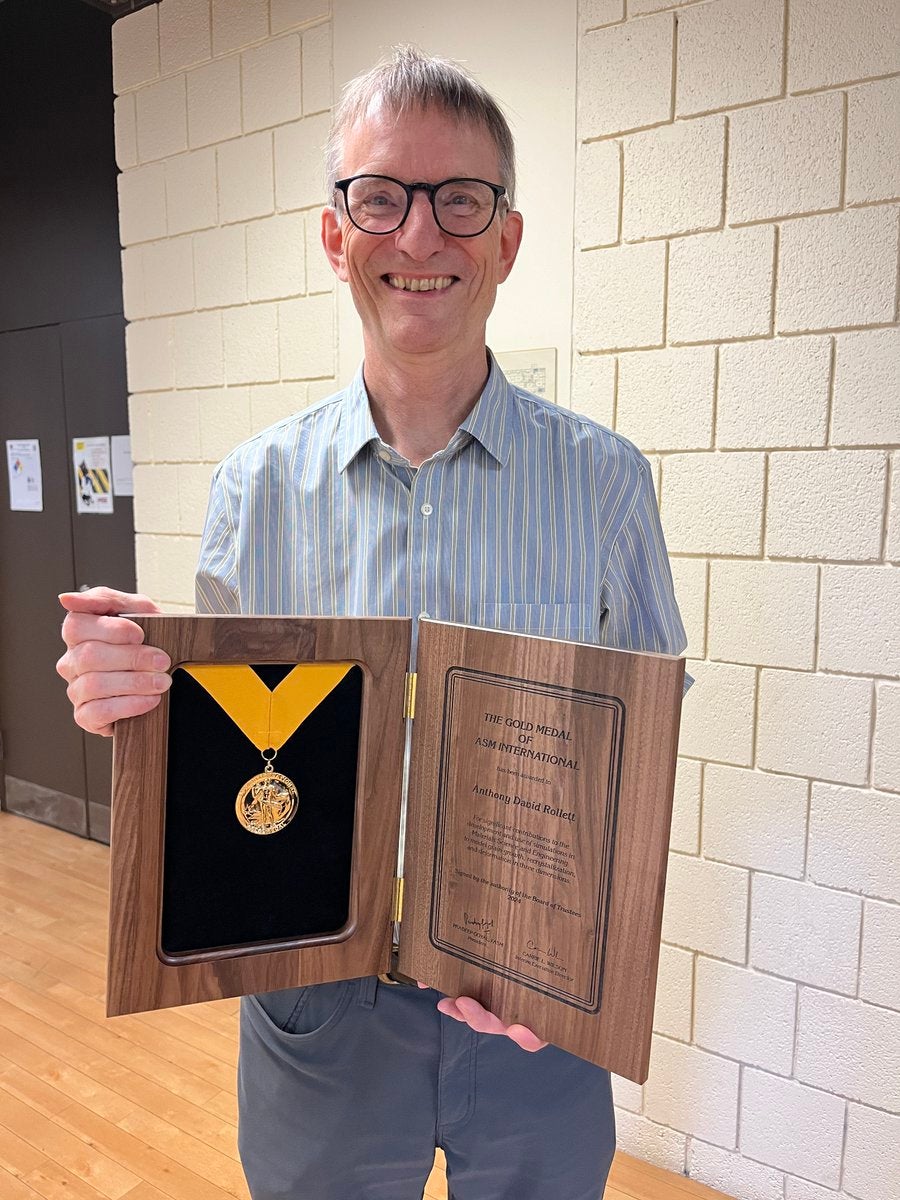
CDAC Academic Partner Tony Rollett (Carnegie Mellon University) has received the 2024 Gold Medal Award from ASM International, the worlds’ largest association of materials engineers and scientists.
The Gold Medal Award was established in 1943 “to recognize outstanding knowledge and great versatility in the application of science to the field of materials science and engineering, as well as exceptional ability in the diagnosis and solution of diversified materials problems.”
Tony Rollett is currently the US Steel Professor of Metallurgical Engineering and Materials Science at CMU, having attained the position earlier this year. He is receiving the 2024 Gold Medal “for significant contributions to the development and use of simulations in materials science and engineering to model grain growth, crystallization, and deformation in three dimensions.”
For more on Professor Rollett’s work, see his CMU Faculty Page.
To read about other ASM Awards for 2024, see the ASM Website.
=========================================================================================
Eva Zurek Receives Jacob F. Schoellkopf Medal
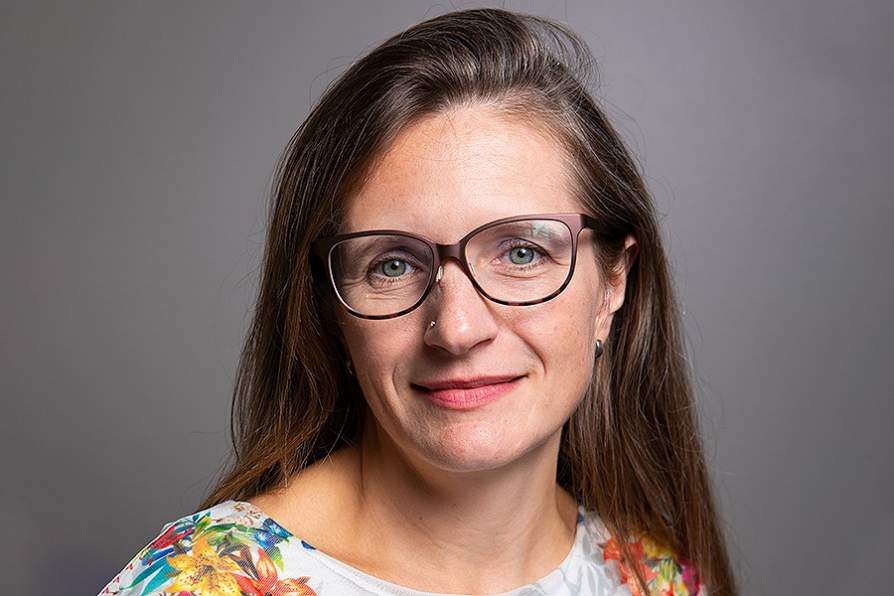
CDAC Academic Partner Eva Zurek (University at Buffalo) is the recipient of the 2023 Jacob F. Schoellkopf Medal, which is awarded annually by the Western New York Section of the American Chemical Society (ACS).
Professor Zurek is receiving the award “ in recognition of pioneering contributions to the fields of superconductivity, high pressure science and technology, and superhard materials chemistry through the development of computational methods for a priori prediction of the structures of solids, emergent properties of materials under pressure, and the way molecules orient and organize themselves on surfaces and within nanoscale architectures.”
The Schoellkopf Medal, which is the oldest ACS local section award in the United States, was endowed by Jacob F. Schoellkopf, Jr, in honor of his father’s contributions to harnessing the hydroelectric power of Niagra Falls, among numerous other business ventures, particularly in the chemical industry. The medal is awarded annually for contributions “toward the objectives or activities of the American Chemical Society,” which may be a discovery pertaining to chemistry, or an invention, plan, process, or device, useful, valuable, or significant to the theory or practice of chemistry, or distinguished service to the Western New York Section.”
Please read the full citation for the award here.
=========================================================================================
CDAC is Renewed for the 4th Time

The Chicago / DOE Alliance Center (CDAC), a multi-institutional Center dedicated to the study of materials at extreme conditions, supported by the US Department of Energy / National Nuclear Security Administration through the Stewardship Sciences Academic Alliances Program, and currently headquartered at the University of Illinois Chicago (UIC), has been renewed for a fourth time. The current cooperative agreement with DOE/NNSA that funds the Center provides $10M in operating funds over four years, and runs from July 2024 through June 2028.
The Center consists of a core group of faculty at UIC along with faculty at seven partner universities. The UIC group includes Russell Hemley (Director, Physics and Chemistry), Stephen Gramsch (Deputy Director, Chemistry), Research Scientists Muhtar Ahart, Ravhi Kumar, Nilesh Salke, and Zhenxian Liu (Physics), and Santanu Chaudhuri and Sara Kadkhodaei (Civil, Materials, and Environmental Engineering).
Academic Partners continuing on with CDAC from the previous award period are Elif Ertekin (University of Illinois Urbana-Champaign), Steven Jacobsen (Northwestern University), Maik Lang (University of Tennessee), Lowell Miyagi (University of Utah) and Eva Zurek (University at Buffalo). New partners joining the CDAC effort for the current phase of the Center are Saniya Leblanc (George Washington University), and Anthony Rollett and Robert Suter (Carnegie Mellon University). Dana Dlott (University of Illinois Urbana-Champaign) was an original Academic Partner in CDAC and rejoins the Center for the current phase of the program.
Originally launched in 2003 by Hemley and Gramsch as the Carnegie / DOE Alliance Center at the Carnegie Institution of Washington, CDAC has as its mission to enhance our understanding of materials in extreme thermomechanical, chemical, and radiation environments; to integrate and coordinate experimental and theoretical studies of materials in these conditions, and to train and diversify the next generation of scientists for work in this growing field of materials science by enriching graduate education and training and by facilitating interactions between NNSA lab scientists and academia.
The Center moved to UIC in 2019 and was renewed for the third time in 2020.
=========================================================================================
CDAC Students Receive Best Poster Awards at FORCE Workshop
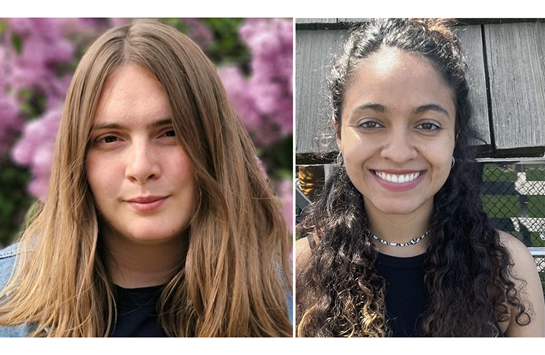
CDAC graduate students Allison Pease and Luisa Chevarria, from the group of academic partner Susannah Dorfman at Michigan State University, received the Corning Student Poster Awards at a recent workshop hosted by FORCE (Facility for Open Research in a Compressed Environment) from January 3-4, 2024 at Arizona State University. The workshop, “Recent Advances in High Pressure Research,” was the second annual event hosted by FORCE and consisted of a series of invited lectures, topical breakout sessions, a student poster session, and facility tours.
Luisa’s poster was entitled Role of Iron Concentration in the Incorporation of Sodium into Ferropericlase in the Earth’s Lower Mantle ; Allison’s poster was entitled Thermal Equation of State of Transition Metal-Bearing Davemaoite and Implications for Large Low Shear Velocity Provinces. Both projects involve collaboration with the CDAC group of academic partner Steve Jacobsen at Northwestern University and include Northwestern graduate student Hannah Bausch.
For more on the workshop, see the FORCE Workshop website.
To read Luisa’s and Allison’s abstracts, see the workshop program.
=========================================================================================
Top Ten CDAC Webinars

As we approach the 100th CDAC Webinar, we take a brief look back on those webinars that have received the most YouTube views to date.
CDAC began its weekly webinar series in May 2020, featuring speakers from the high pressure research community who discuss their work in an informal, online seminar format. The webinar series was started as a way to connect students and colleagues with leaders in the field during a time when in person meetings were not possible due to the pandemic. Initially a weekly event, and now held every other week, the number of CDAC webinars now numbers nearly 100. Most of the webinars have been recorded and are available on the CDAC YouTube channel, with links provided on the CDAC website.
The 100th webinar will be given by Peter Sharma (SNL) on November 1, 2023.
The top-10 viewed webinars are listed below in alphabetical order by speaker, with the webinar number and number of views as of Nov. 1, 2023:
26. 01/06/2021 / Unsolved Phase Diagrams of Simple Materials
Reini Boehler (Oak Ridge National Laboratory) reviewed some key technical developments in high P- T research that have led to an increased understanding of phase relationships in a number of key systems (159 views).
56. 11/03/2021 / Innovation and Impact — Science at Lawrence Livermore National Laboratory
Kim Budil (Lawrence Livermore National Laboratory), Director of LLNL and a University of Illinois Chicago alumna, outlined the scope of LLNL’s mission, and its tremendous scientific impact as well as the many opportunities available for scientists at all levels to participate in the laboratory’s scientific programs (149 views).
31. 02/24/2021 / Symmetry Breaking Transitions in Light Alkalis Under Pressure
Shanti Deemyad (University of Utah) provided an overview of recent experimental work in understanding the physics of the surprisingly complex phase transitions in lithium and sodium (164 views).
45. 06/02/2021 / Dynamic Compression of Planetary Materials to Terapascal Pressures
Tom Duffy (Princeton University), another UIC alumnus and one of the original CDAC academic partners, discussed new experiments in his group that are taking advantage of national laser user facilities to understand the physics and chemistry of deep planetary interiors (129 views).
78. 11/09/2022 / Bismuth Under Pressure
Danna Freedman (Massachusetts Institute of Technology) summarized her group’s approach of using pressure as a synthetic tool to explore the complex structure-property relationships in a series of new bismuth-based compounds (271 views).
27. 01/31/2021 / Looking for Conceptual Connections Between Bonding at 1 Atmosphere and Elevated Pressures
Roald Hoffmann (Cornell University) applied his unique insight in elucidating chemical bonding patterns between seemingly unrelated classes of elements and compounds to show how relationships between chemical bonding exist between structures at ambient conditions and those observed across a wide range of pressures (320 views).
74. 08/31/22 / Stereochemistry, Pressure and Energetics
Tim Jenkins (Army Research Laboratory) showed how the pressure variable can be used to alter the conformations of molecular systems in the crystalline solid, and how these changes are relevant to our understanding of energetic materials (423 views).
14. 09/16/20 / Plastic Strain-Induced Phase Transformations at High Pressure
Valery Levitas (Iowa State University) described his group’s development and use of novel experimental techniques and apparatus to drive phase transitions in materials using strain as well as pressure (231 views).
29. 02/03/21 / Novel Chemistry at High Pressure
Maosheng Miao (California State University – Northridge) reviewed his group’s development of new theoretical and computational methods to explore chemical reactivity at high pressures and to predict new chemistry in compositions and conditions that are difficult to access experimentally (131 views).
75. 09/01/2022 / Mechanical Instabilities in Fe and FeV at High Pressures and Temperatures
Jorge Munoz (University of Texas-El Paso) revisited some previous experimental work, now supplemented by computational studies, on Fe and FeV and showed that, with a combination of inelastic x-ray and neutron scattering measurements, it is possible to unravel the subtle role of phonon thermodynamics in controlling the phase stabilities of Fe and the FeV alloy (146 views).
=========================================================================================
Job Posting: RD2 Assistant Beamline Scientist/RD3 Beamline Scientist with HPCAT
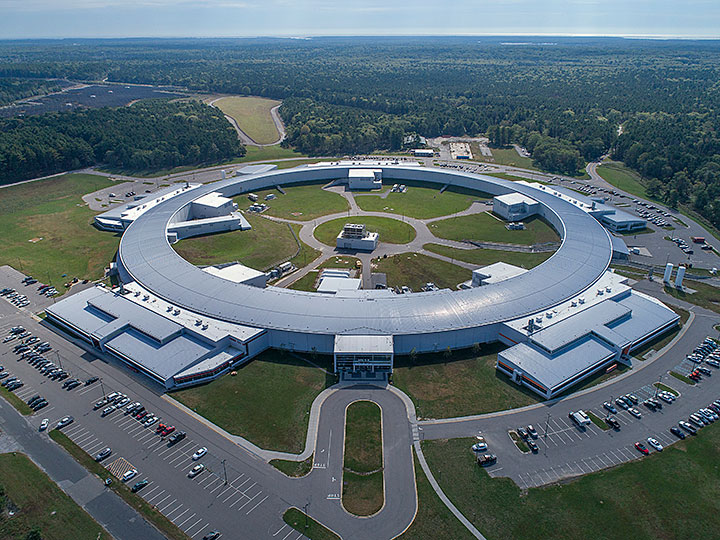
The High-Pressure Collaborative Access Team (HPCAT) located at sector 16 of the Advanced Photon Source is currently seeking a beamline scientist to provide support for conducting research at extreme pressure-temperature conditions. The primary focus of this role will be to advance the applications of cutting edge, synchrotron-based, static, and time-resolved, high P-T research and enable transformational scientific discoveries in material science, physics, and chemistry. We are seeking a candidate with expertise in laser heating systems, but candidates with broader qualifications/background will be also considered.
=========================================================================================
John Lazarz: Senior Federal Program Manager for Ground-based Nuclear Detonation Detection at the NNSA

John Lazarz is a CDAC alum now working at NNSA headquarters in Washington, D.C. John was a member of Academic Partner Steven Jacobsen’s research group at Northwestern University and studied for his Ph.D. thesis the effects of water on the structure of Earth’s transition zone through high-pressure experiments. He was also deeply involved in instrument development for high-pressure diffraction and ultrasonic interferometry and published widely as a graduate and undergraduate student.
As a CDAC-supported student, he also interned at Los Alamos National Laboratory (LANL) as a Post Doc in the Shock and Detonation Physics group, where he used spectroscopy techniques such as Brillouin spectroscopy and impulse stimulated thermal scattering to study the optical and thermoelastic characteristics of high explosives and their analog materials such as acetaminophen.
Following a postdoc in the Shock and Detonation physics group at LANL, John currently serves as the Senior Federal Program Manager for Ground-based Nuclear Detonation Detection in the Office of Nuclear Detonation Detection at the U.S. Department of Energy (DOE) National Nuclear Security Administration (NNSA) Office of Defense Nuclear Nonproliferation Research and Development (DNN R&D). In this position, he directs research and development efforts at the DOE/NNSA national laboratories to improve U.S. capabilities to detect, locate, and identify underground nuclear explosions at regional and teleseismic distances. John’s current research interests include seismic, infrasound, and hydroacoustic waveform modeling and simulation as well as atmospheric radionuclide emissions as signatures of underground nuclear explosions.
Among John’s papers is a study of pressure-induced phase transitions ichain silicates using single-crystal X-ray diffraction at HPCAT. He discovered that the pyroxene-group mineral clinoenstatite (Mg2Si2O6) undergoes a second phase transition from its high-pressure form above 6 GPa to a new structure above 45 GPa with edge-sharing Mg-octahedra [Lazarz, J. D., et al., High-pressure phase transitions of clinoenstatite. American Mineralogist 104, 897-904 (2019)].
=========================================================================================
Katie Hilleke joins the Laboratory for Laser Energetics at the University of Rochester
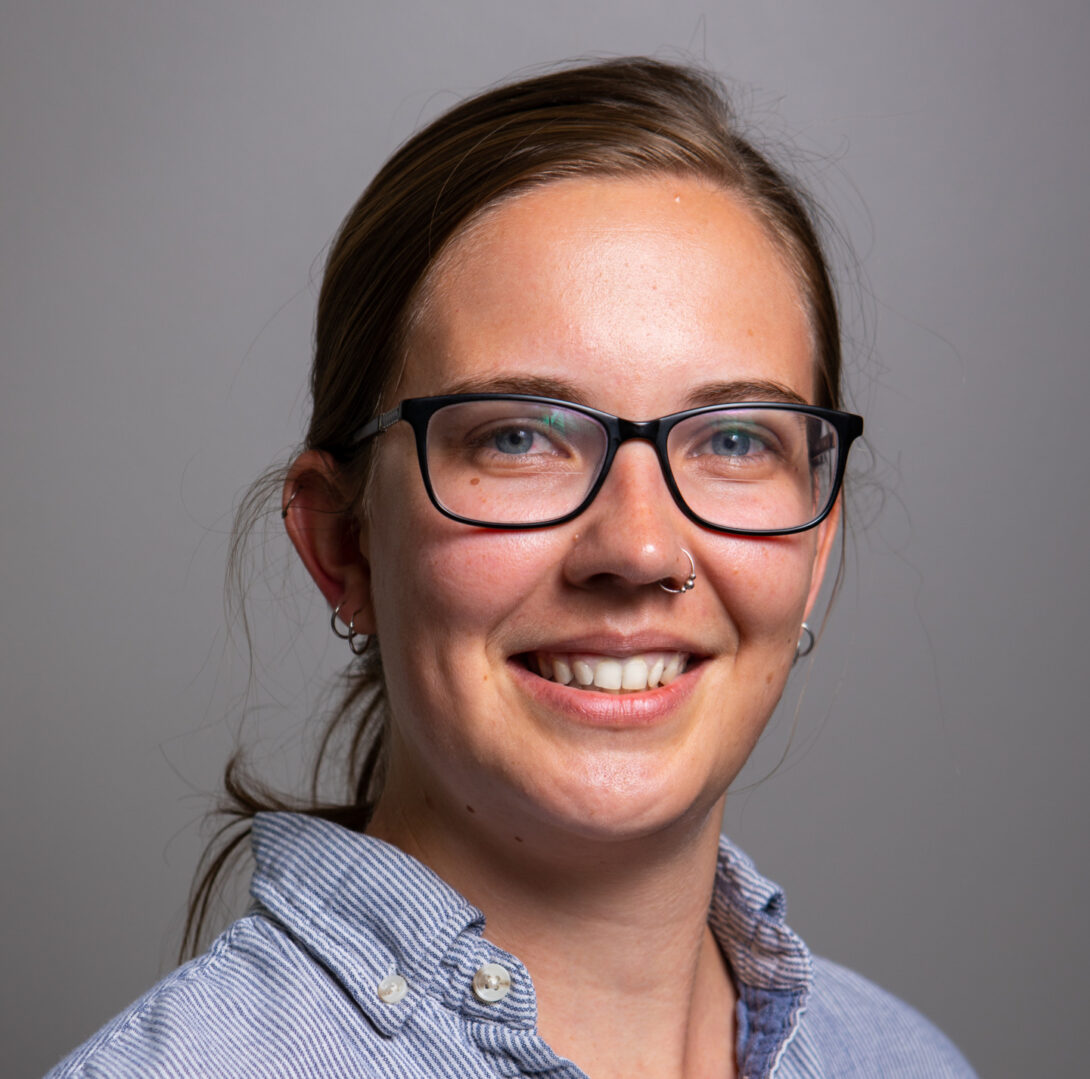
CDAC Postdoctoral Researcher Katie Hilleke, from the group of Academic Partner Eva Zurek at the University at Buffalo, has recently taken a position as an Assistant Scientist in Computational/Theoretical High Energy Density Physics at the Laboratory for Laser Energetics, University of Rochester. She will use her experience in the use of density-functional electronic structure methods to develop exchange-correlation functionals and computational software for orbital-free density functional theory.
Katie recieved her PhD in Chemistry from the University of Wisconsin-Madison in 2019 and as a CDAC postdoctoral researcher, she worked on developing theoretical methods for addressing problems in high pressure chemistry, particularly in the area of structure and bonding. Collaborating with Tadashi Ogitsu at LLNL, Katie identified many novel boron structures that could exist at high pressures, which has provided guidelines for future high pressure experiments, both static and dynamic. Her work on elucidating the role of chemical pressure in stabilizing the metal hydride clathrate structures has contributed to the understanding of the superconducting behavior of these materials.
Katie also contributed to a new release of the XtalOpt evolutionary algorithm for structure prediction, and has made important contributions to the scientific literature with several comprehensive reviews, which have brought new chemical perspectives to the field of high pressure research.
The CDAC community wishes Katie continued success with her research in her new position, and offers its thanks for her many contributions to the Center. Congratulations, Katie!
=========================================================================================